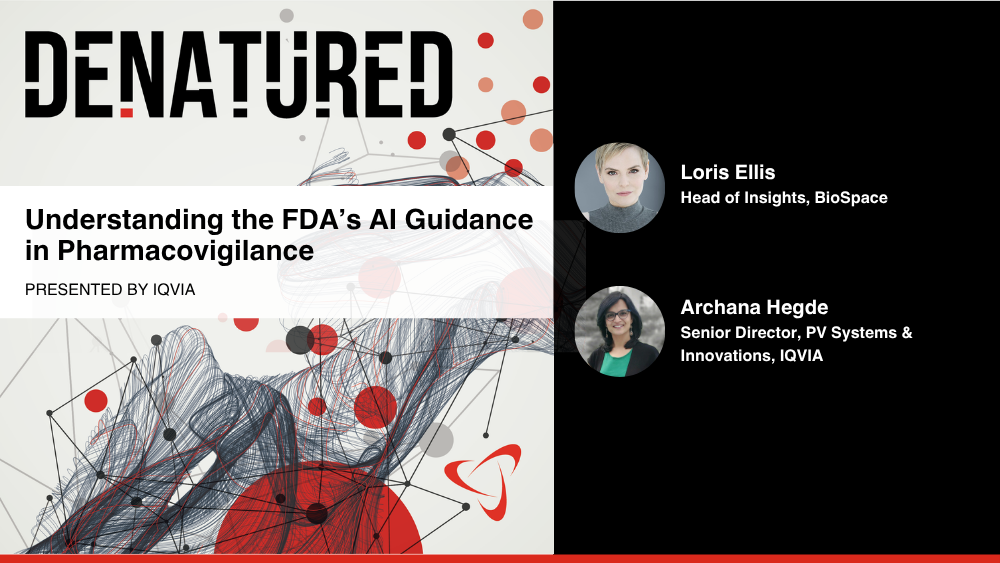BLUE BELL, Pa., July 10, 2013 /PRNewswire/ -- Inovio Pharmaceuticals, Inc. (NYSE MKT: INO) announced today the peer-reviewed publication of results from two phase I trials (HVTN 070 and HVTN 080) of its PENNVAX®-B preventive HIV DNA vaccine delivered with a DNA adjuvant and with or without Inovio's proprietary CELLECTRA® electroporation delivery device. The studies were conducted by the HIV Vaccine Trials Network (HVTN). Inovio's HIV DNA vaccine together with the CELLECTRA device significantly increased the number of responders producing robust and durable CD4 and CD8 T-cell responses in humans. The observation of robust T-cell responses against distinct targeted diseases generated by different Inovio SynCon® DNA vaccines delivered using CELLECTRA electroporation technology have now been published in two respected peer-reviewed journals. These results are compelling because T-cells are considered critical to fighting cancers and chronic infectious diseases.
While Inovio previously released preliminary data from these two trials, this comparison and durability data was published in the peer-reviewed Journal of Infectious Diseases in the article, "Safety and comparative immunogenicity of an HIV-1 DNA vaccine in combination with plasmid IL-12 and impact of intramuscular electroporation for delivery." The lead author was Dr. Spyros Kalams, who is Associate Professor of Medicine, Vanderbilt University Medical Center and principal investigator of Vanderbilt's HIV Vaccine Trials Unit for both clinical studies.
Robust T-cell responses were generated in 89% of the subjects that received three vaccinations of PENNVAX-B, which consists of 1 mg of each of three DNA plasmids (encoding for HIV gag, pol, and env proteins) along with 1 mg of IL-12 DNA plasmid, followed by intramuscular electroporation with Inovio's CELLECTRA device. Three or four vaccinations with a 2 mg dose of each PENNVAX-B plasmid plus 1.5 mg of IL-12 DNA generated fewer responses when delivered without electroporation.
Comparative T-Cell Response Rates: | ||
PENNVAX-B Plus DNA IL-12 With and Without CELLECTRA Electroporation (EP) | ||
Regimen | CD4 | CD8 |
Half dose, 3 vaccinations, with EP | 80.8% (21/26) | 51.9% (14/27) |
Full dose, 3 vaccinations, without EP | 19.2% (5/26) | 6.9% (2/29) |
Full dose, 4 vaccinations, without EP | 40.7% (11/27) | 3.6% (1/28) |
Notably, using only half the vaccine dose, and only three doses as compared to four, CELLECTRA electroporation generated a 45% point increase (7% to 52%) in the generation of CD8 T-cells compared to the subjects that received a full dose without electroporation. In the three-vaccination regimen with electroporation, 88.9% (24/27) of subjects developed a robust CD4 or CD8 response. Six months after vaccination, T-cell response rates remained strong and persistent in the subjects that received only three doses delivered by CELLECTRA EP. Of 24 positive CD4 or CD8 T-cell responders following the third and last vaccination in month 3, 79% (19/24) showed persistent CD4 or CD8 T-cell responses at month 9. There were no safety issues observed when Inovio's DNA vaccine for HIV was co-administered with IL-12 DNA and delivered using electroporation with CELLECTRA.
CD4 and CD8 T-cells are both important in cellular immunity, however, CD8 T-cells are considered especially integral to fighting cancers and chronic infectious diseases. Achieving a robust CD8 T-cell response in a significant number of patients, i.e. a significant response rate, has been a particular challenge for HIV researchers. In this study, PENNVAX-B generated CD8 T-cell responses with significant magnitude (as measured by the validated HVTN assay).
In other study arms that did not achieve statistical significance, the use of IL-12 DNA appeared to positively impact T-cell response rates. The increased response rate only occurred when IL-12 DNA was delivered with electroporation. This effect may be further investigated in future studies of Inovio DNA vaccines delivered with electroporation.
Dr. J. Joseph Kim, Inovio's President and CEO, said, "This is the second major scientific journal to publish clinical papers demonstrating our best-in-class T-cell responses from two of Inovio's product candidates in two different disease indications.
"This proof-of-concept data highlights not only the robust HIV-specific T-cell production achievable with next-generation vaccine technology, but clearly defines in a human comparison study the very significant impact of our CELLECTRA electroporation technology in increasing targeted immune responses with a dose sparing benefit and excellent safety outcomes to date. The difference in T-cell generation is striking and will benefit the further development of our transformative DNA vaccines to treat and prevent HIV infection and other diseases. We have incorporated this knowledge from the single-clade PENNVAX-B program into the design of our multi-clade PENNVAX®-GP vaccine, which is now our lead preventive and therapeutic vaccine that broadly targets global HIV strains, and look forward to initiating our first human study of this vaccine later this year. PENNVAX-GP was developed through a $25 million contract with the NIAID; the clinical study of PENNVAX-GP will also be conducted by the HVTN."
Inovio's patented CELLECTRA electroporation delivery technology uses controlled, millisecond electrical pulses to create temporary pores in the cell membrane and allow significant cellular uptake of a synthetic DNA vaccine previously injected into muscle or skin. This technique has been shown to increase gene expression of the encoded "antigen" by as much as 1000-fold compared to vaccination without electroporation.
Inovio's cutting-edge DNA and electroporation technology also avoids issues that have plagued some other vaccine platforms: for example, researchers have observed that some vector-based vaccines may be associated with the lessening of immune responses driven by vaccination.
The two HIV phase I trials, HVTN 070 (without electroporation; n=120 patients); and 080 (with electroporation; n=48 patients); were multicenter, randomized, clinical trials. The studies were sponsored by the National Institute of Allergy and Infectious Diseases (NIAID), an agency of the National Institutes of Health, and conducted by the NIAID-funded HIV Vaccine Trials Network (HVTN) at several clinical sites.
About the HVTN
The HIV Vaccine Trials Network (HVTN), headquartered at Fred Hutchinson Cancer Research Center in Seattle, Wash., is an international collaboration of scientists and educators searching for an effective and safe HIV vaccine. The HVTN's mission is to facilitate the process of testing preventive vaccines against HIV/AIDS. The HVTN conducts all phases of clinical trials, from evaluating experimental vaccines for safety and the ability to stimulate immune responses, to testing vaccine efficacy. Support for the HVTN comes from the National Institute of Allergy and Infectious Diseases (NIAID) of the U.S. National Institutes of Health (NIH). The Network's HIV Vaccine Trial Units are located at leading research institutions in 27 cities on four continents. Internationally renowned HIV vaccine and prevention researchers lead the units.
About Inovio Pharmaceuticals, Inc.
Inovio is revolutionizing vaccines to prevent and treat today's cancers and challenging infectious diseases. Its synthetic consensus design approach is intended to help the immune system identify and fight cancer cells or multiple unmatched strains of a mutating virus. These proprietary synthetic vaccines, in combination with Inovio's electroporation delivery, have in humans generated best-in-class immune responses with a favorable safety profile. Inovio's lead vaccine, a therapeutic against HPV-caused diseases, is in phase II. Other phase I and preclinical programs focus on HIV, influenza, malaria and hepatitis C virus. Partners and collaborators include the University of Pennsylvania, Merck, National Cancer Institute, U.S. Military HIV Research Program, NIH, HIV Vaccines Trial Network, University of Southampton, US Dept. of Homeland Security, University of Manitoba and PATH Malaria Vaccine Initiative. More information is available at www.inovio.com.
This press release contains certain forward-looking statements relating to our business, including our plans to develop electroporation-based drug and gene delivery technologies and DNA vaccines and our capital resources. Actual events or results may differ from the expectations set forth herein as a result of a number of factors, including uncertainties inherent in pre-clinical studies, clinical trials and product development programs (including, but not limited to, the fact that pre-clinical and clinical results referenced in this release may not be indicative of results achievable in other trials or for other indications, that the studies or trials may not be successful or achieve the results desired, that pre-clinical studies and clinical trials may not commence or be completed in the time periods anticipated, that results from one study may not necessarily be reflected or supported by the results of other similar studies and that results from an animal study may not be indicative of results achievable in human studies), the availability of funding to support continuing research and studies in an effort to prove safety and efficacy of electroporation technology as a delivery mechanism or develop viable DNA vaccines, the adequacy of our capital resources, the availability or potential availability of alternative therapies or treatments for the conditions targeted by the company or its collaborators, including alternatives that may be more efficacious or cost-effective than any therapy or treatment that the company and its collaborators hope to develop, evaluation of potential opportunities, issues involving product liability, issues involving patents and whether they or licenses to them will provide the company with meaningful protection from others using the covered technologies, whether such proprietary rights are enforceable or defensible or infringe or allegedly infringe on rights of others or can withstand claims of invalidity and whether the company can finance or devote other significant resources that may be necessary to prosecute, protect or defend them, the level of corporate expenditures, assessments of the company's technology by potential corporate or other partners or collaborators, capital market conditions, the impact of government healthcare proposals and other factors set forth in our Annual Report on Form 10-K for the year ended December 31, 2012, our Form 10-Q for the quarter ended March 31, 2013, and other regulatory filings from time to time. There can be no assurance that any product in Inovio's pipeline will be successfully developed or manufactured, that final results of clinical studies will be supportive of regulatory approvals required to market licensed products, or that any of the forward-looking information provided herein will be proven accurate.
(Logo: http://photos.prnewswire.com/prnh/20120131/LA44118LOGO)
CONTACTS:
Investors: Bernie Hertel, Inovio Pharmaceuticals, 858-410-3101, bhertel@inovio.com
Media: Jeff Richardson, Inovio Pharmaceuticals, 267-440-4211, jrichardson@inovio.com
SOURCE Inovio Pharmaceuticals Inc.
Help employers find you! Check out all the jobs and post your resume.




